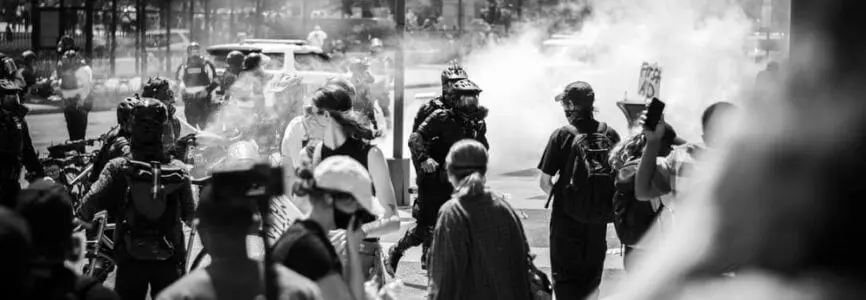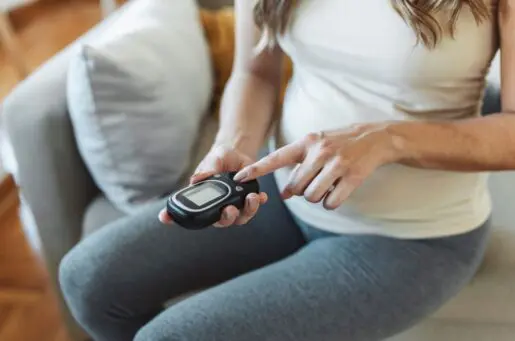Bioethics Forum Essay
When Less-Lethal Weapons Are Lethal: Medicine’s Role in Police Brutality
During medical training in San Francisco in the late 1970s, friends sometimes observed it seemed curious that one of us (Kim Thorburn) worked in the jail located upstairs in the Hall of Justice and the other (Terence Allen) in the Medical Examiner Office downstairs. The stories of our patients often intertwined and included victims of “less-lethal weapons.” At the time they were promoted as “nonlethal weapons;” we followed their use throughout our careers and questioned justifications for tear gas, rubber bullets, Tasers, and stun guns often used in conjunction with or followed by suffocating mechanical restraints like choke holds, chest compression, arm restraints, and hog-tying.
The name change to less-lethal weapons has been used to support and defend more general use. Considered an alternative to lethal force, these weapons escalate nonlethal threat encounters to situations in which people are seriously maimed or killed. We saw these consequences in our practices and concluded the weapons and tactics have no place in policing.
The frequent appearance of these weapons and techniques in today’s news strengthens our belief. Law enforcement professionals vehemently resist this position, claiming that such tools are essential to public safety. But, too often, it’s their use that leads to the threat to safety. Medicine contributes to the myth of the value of these weapons by downplaying their danger. It’s time to explore medicine’s complicity in perpetuating brutality that disproportionately impacts nonwhite communities, especially Black Americans.
We have experience trying to dismantle the armory. We’ve written letters and articles, and testified in court. Such efforts run up against some mighty powerful interests. For starters, there’s the weapons industry. Weapons makers claim to have “research” to support their safety. They provide training and have cops use the weapons on one another. Convincing? Not really. In the real world, victims of these weapons are often frightened, struggling, on drugs, or in other physical situations that make the weapons more lethal than they would be in controlled training classes.
Those who argue that the weapons themselves don’t kill often assert that underlying conditions are the cause of death. It was widely reported in the media that the Hennepin County medical examiner’s initial analysis of George Floyd’s death discounted asphyxia and implicated chronic conditions and intoxication. But the final report–made after Floyd’s family paid for a second autopsy–concluded that he was choked to death.
Medical examiners argue that second autopsies cannot reliably identify cause of death because significant findings may be altered or removed during dissection. They insist that the initial results can be trusted because medical examiners operate independently from law enforcement (police, sheriffs, jail and prison keepers), and that independence assures unbiased analysis. Yet it takes more than a different office to avoid conflict of interest or implicit bias. Third-party review is a good practice to verify the findings. Verifiability is a requirement of scientific method. It should be routine autopsy practice to preserve key specimens and photographs for independent review.
If the victim dies or is seriously injured by the weapons or restraint, the temporal relation to their use has paramount significance. There should be no equivocation about the role of asphyxia, the weapon, or both as the immediate cause of death or injury. The manner of death should be homicide, i.e., “death at the hands of another,” as urged in a position paper by the National Association of Medical Examiners.
When a healthy individual dies after being subdued by less-lethal weapons, and the autopsy doesn’t identify any significant findings, the cause of death is often attributed to “excited delirium.” Whether excited delirium exists as a valid medical diagnosis is controversial. It refers to nonspecific physiologic and behavioral features seen in intoxication and mental illnesses and to certain laboratory findings that suggest that the victim was subjected to repeated electrical shocks, asphyxia, and even high-force impacts. Police have seized upon the “diagnosis” as a reality that excuses killing people, very often Black men, with weapons and physical restraint. Medical examiners and emergency room physicians tend to oblige the police.
Much is written about the association of excited delirium with Taser deaths. In fact, the manufacturer uses consultants to train police and even medical examiners about excited delirium and the importance of Tasers for dealing with the condition. The company has repeatedly prevailed in wrongful death lawsuits by arguing excited delirium was the cause.
There has been less attention to the role of suffocation in less-lethal weapon deaths, perhaps because significant autopsy findings indicating asphyxia require time and expertise to demonstrate. Repeated shocks from Tasers or stun guns can cause asphyxiation. Likewise, suffocation from restricted positioning or application of force can come quite quickly, a fact that is well recognized in medical settings where only certain kinds of closely supervised restraint are permitted.
Our professional exposure to the injuries and deaths caused by less-lethal weapons and choke holds and other physical restraints led us to oppose their use in policing several decades ago, even as more weapons were being introduced, promoted, and added to the arsenal. Entrenched institutional culture has proven resistant to reform. In fact, as courts and communities have attempted police reforms in response to brutal incidents, the use of less-lethal weapons and restraint has become increasingly routine, even in situations that don’t require restraint. Medicine must do its part to promote needed transformation. When death or injury follows use of less-lethal weapons, physical restraint, or both, there should be no obfuscation about cause. The temporal association is overriding and these weapons must be identified in the death certificate or medical record as the cause of death. We believe consistent, honest, scientifically-supported documentation is the essential first step to abolition of the less-lethal weapon armory and to prevent deadly restraint practices.
Kim Thorburn, MD, practiced medicine in jails and prisons in California and Hawaii. Terence B. Allen, MD, practiced forensic pathology as a medical examiner in California and as a consultant in Hawaii. He also provided prison and jail medical care.
45% of The Hastings Center’s work is supported by individual donors like you. Support our work.













